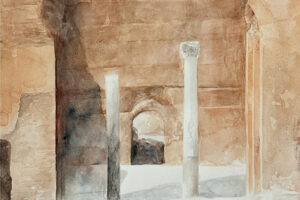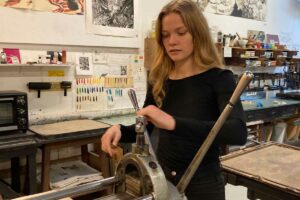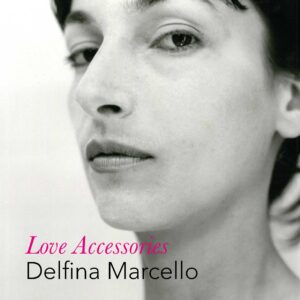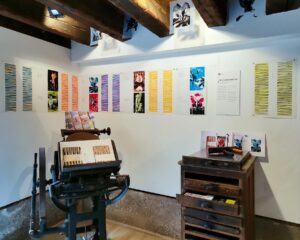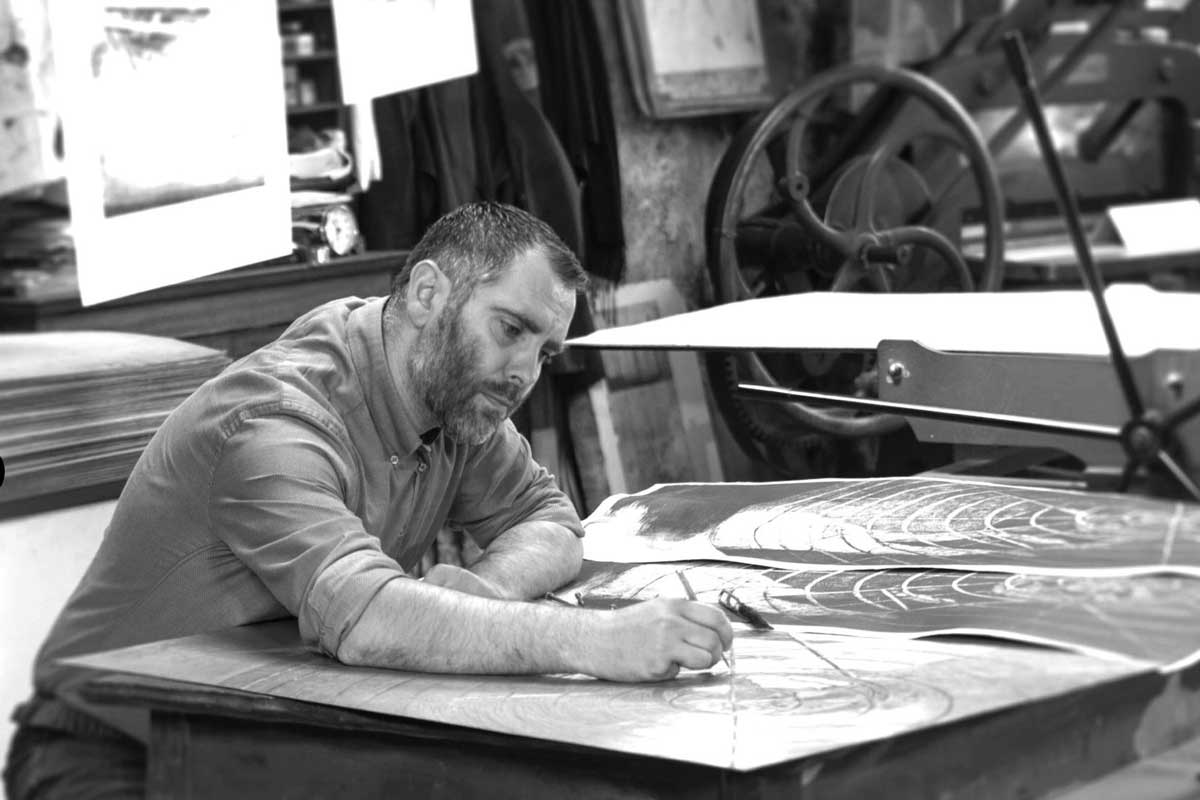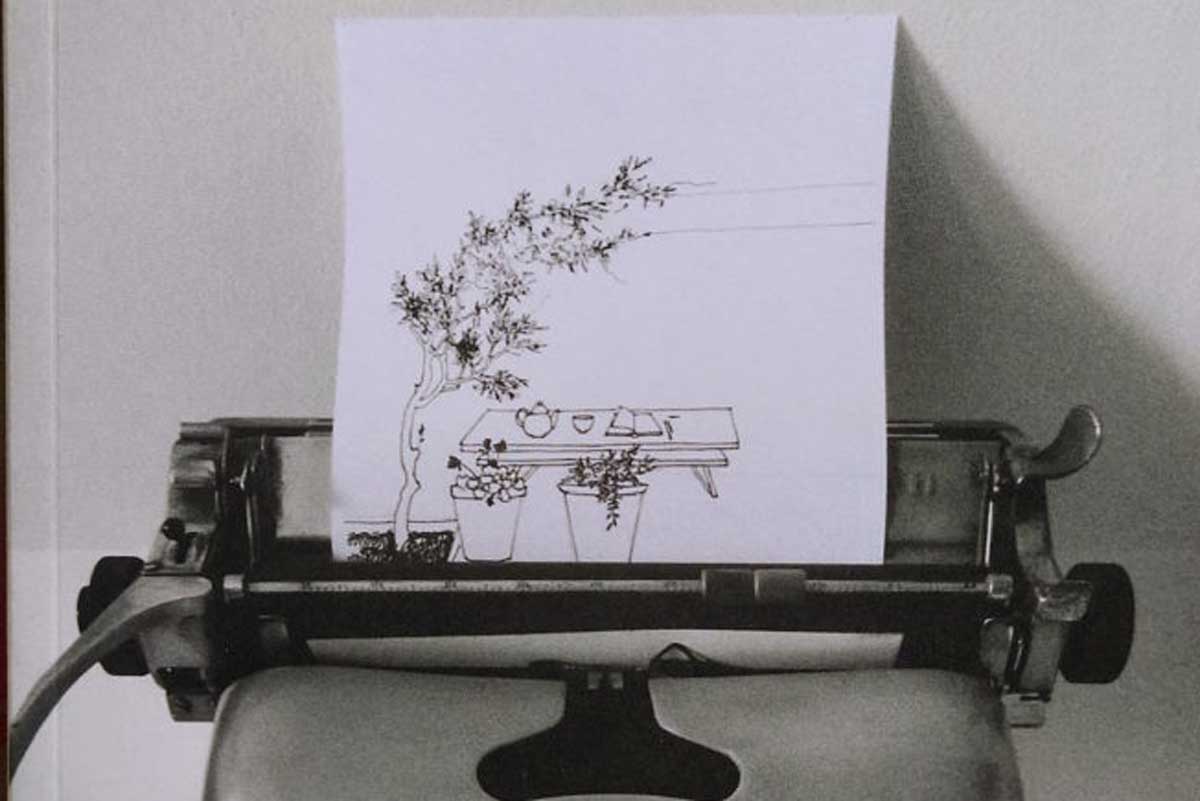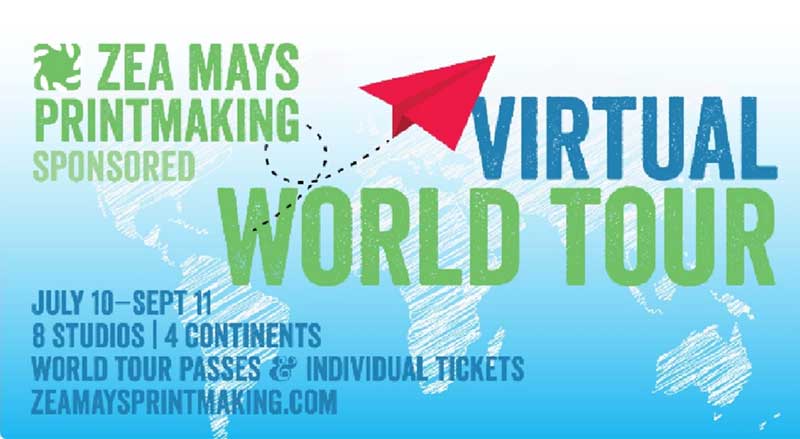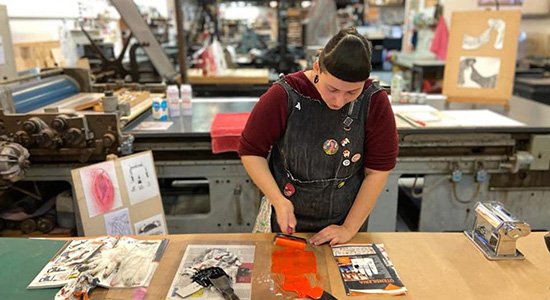September 12, 2016
Interview with Traci Horgen, Resident Artists Coordinator in April-June 2016.
Lorenzo de Castro.Traci, you have spent 3 months at the Scuola as coordinator of resident artists. Based on your experience, who would you encourage to apply for this position?
Traci Horgen. If you are an artist with a commitment to the idea that community is an essential part of your creative process then you would find this fellowship incredibly rewarding. The Scuola is a peaceful oasis which encourages dialog, thoughtfulness and industrious art- making. The ideal candidate for this fellowship is someone who sees themselves as a leader who encourages participation in this equitable and productive creative environment.The successful residency coordinator is flexible and adaptable, organized and able to make sound judgments independently. Of course, prior experience participating in or better yet working for an artist residency program is helpful. Dedicating a certain amount of your time regularly in order to enable your fellow artists to have a positive and enriched residency experience should feel like a privilege which adds value to your own experience. Residency programs are always a bit of a social experiment. It is a circumstance in which artists with a wide variety of back stories, professional experience and expectations, are interacting with other artists they would not have met under any other circumstance. If this sounds intriguing to you and you enjoy helping other artists then you should apply.
LdC. Who do discourage from applying?
TH. If you’re primary motivation is going to a residency for free this isn’t the right fellowship for you. This is an in-kind fellowship in which you are contributing your time towards coordinating the program in exchange for the waving of residency fees. If you feel that you might see supporting the other artists in the program (orientation, critiques, open studio events etc) as an impingement on your own studio time rather than adding value to your residency experience than this fellowship is not for you.
LdC. This question is about your art. I would like to know how do you feel about the work you produced during your Venice residency.
TH. I have been using digital images of Renaissance and Baroque ornamentation and decorative objects as source material for my work for a few years now. This residency was the first time I was able to make work from my own photo-documentation of this kind of ornamentation in context. I took almost 1,000 photographs of decorative architectural elements throughout the city. Based on these images, I made two bodies of work, a series of 4 color serigraphs based on the the circular reliefs found in Venice called patere and a series of works on paper (serigraphy, drawing & painting) depicting and transforming various types of Venetian ornamentation.
In documenting ornamentation and production of new work, I was incredibly focused and productive because I felt I was in a state of mindful observation and making work that was an immediate and instinctive response to what I was seeing. While I was making critical decisions about the direction of the work in the midst of producing it, I was not particularly paying attention to whether or not I thought it was “bad” or “good”. I have found that to be an unproductive way of thinking and only serves to insert one’s ego into the process, limiting the possibilities of the work to the boundaries of one’s own expectations. A residency experience yields work made in a kind of capsule of time— a
discrete period of intense studio labor, uninterrupted by the requirements of everyday life. Upon returning home the natural questions always are: “Is this a discrete body of completed work I’ve made or work in progress? Will this work alter my subject matter or my creative practice in any way?”
Although I feel at this time the work is mostly complete, I will continue to incorporate this rich trove of ornamentation into my art practice. The potent fluidity and expressive significance of ornamentation in the context of Venice continues to serve as a touch- stone for my practice. The visual evidence of history through architecture and ornamentation is kind of spectacle which makes that history seem not dead and gone or frozen in time but rather present with a heart yet beating. There is an unmistakable impression in Venice that all past and all present exist simultaneously. I observed this phenomenon in Venice as a kind of confusion in which one is unable to pinpoint an exact sense of place and of time and Venetian identity. There is a dislocation that occurs that is particularly striking as a consequence of thousands of years of a “Jenga”-like hustle of growth and development in a limited urban space where every cubic meter of space is a high value property and a potential locus of dramatic activity. This dislocation is a result of the natural course of time, the repurposing of space, the varying degrees of attention given to restoration and shifts in attitude towards the value and significance of architecture and the ornamentation that adorns them. As a result ornamentation becomes a simulacrum, removed from it’s original context (often times literally) and relieved of its original duty to signify wealth, power, morality, allegiances, etc., to serve as a signifier of self-contradiction and flux which is lyrically expressive with no particular purpose.
For that reason, ornamentation serves as a mechanism in my studio practice for investigating ideas around identity, value and place-making which is a fundamental human imperative and echoes a deep personal longing for finding my true place. I will continue to reflect on the work made while in residency and the digital images I collected while in residency will continue to serve as inspiration and subject matter for my work and my own search for meaning.
LdC. UNESCO has warned that unless things change radically, Venice will be removed from the list of the World Heritage Sites. The innumerable problems that affect our city are largely caused by invasive mass tourism, and both national and local authorities are doing nothing to improve things. How did you experience this situation during your 90 days as resident artist and ‘almost Venetian’ resident?
I am not surprised that UNESCO has reported such concerns. The 30 million plus tourists that Venice welcomes each year is indeed unsustainable from the standpoint of environmental and civic impact. The problem of tourist crowding was palpable and unavoidable while I was there. The sight of gargantuan cruise ships regularly being nudged through the Giudecca Canal by tug boats was so glaringly incongruous I wondered how all those people would fit in this city of winding narrow street and foot bridges and what the quality of their experience could possibly be. The great irony is that the commercial infrastructure mean to cater to the very tourists that are seeking an impactful and authentic cultural experience is in fact quickly destroying the possibility of ever having that experience.
For myself, to find Venice within the city of Venice was a challenge and required a certain degree of skepticism in regard to what an authentic cultural experience in Venice means. Having the privilege of time meant that I was able to create a strategy for having that experience. I walked to the studio during times when I knew tourist traffic would be minimal. I dismissed most shops, restaurants and major tourist destinations in favor of smaller cultural venues, one or two trusted restaurants and I relied on the guidance and wisdom of the Venetians associated with the Scuola. My sense is that Venice is in a state of siege and yet remains a beautiful and richly inspirational place with an extra thick layer tourism that takes a little extra time to see beyond.
Traci Horgen lives and works in Ridgewood, New York. Most recently, she received a residency coordinator full fellowship at the Scuola Internazionale di Grafica Venezia, Italy where she also had a solo exhibition entitled “Yet/Ancora”. In 2015 she was included in the Bronx Museum’s exhibition,” Bronx Calling,The Third AIM Biennial” and the International Print Center/New York’s juried show “New Prints, Summer”. She has exhibited in group shows at HallSpace Gallery in Boston and the Gowanus Ballroom in Brooklyn. Other exhibitions include a solo installation project at chashama 216 and inclusion in juried exhibitions at the International Print Center, NY and Manhattan Graphics. Traci was awarded a place in the Bronx Museum’s Artist in the Marketplace 2014-2015 program has been an Artist in Residence at Emmanuel College, Kala Institute of Art and the International School of Art. Traci holds an MFA in Studio Art from University of California, Davis and a BFA from Hartford Art School at University of Hartford.
You can visit Traci Horgen’s website following this link➤

